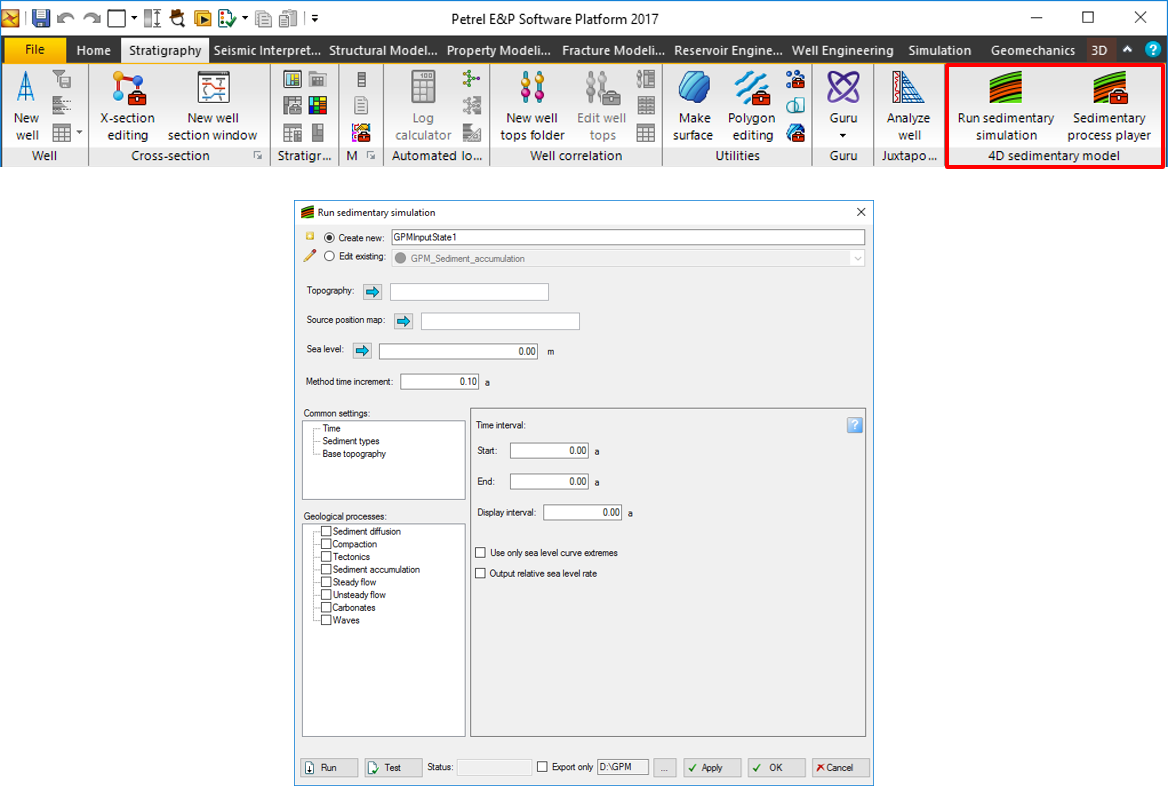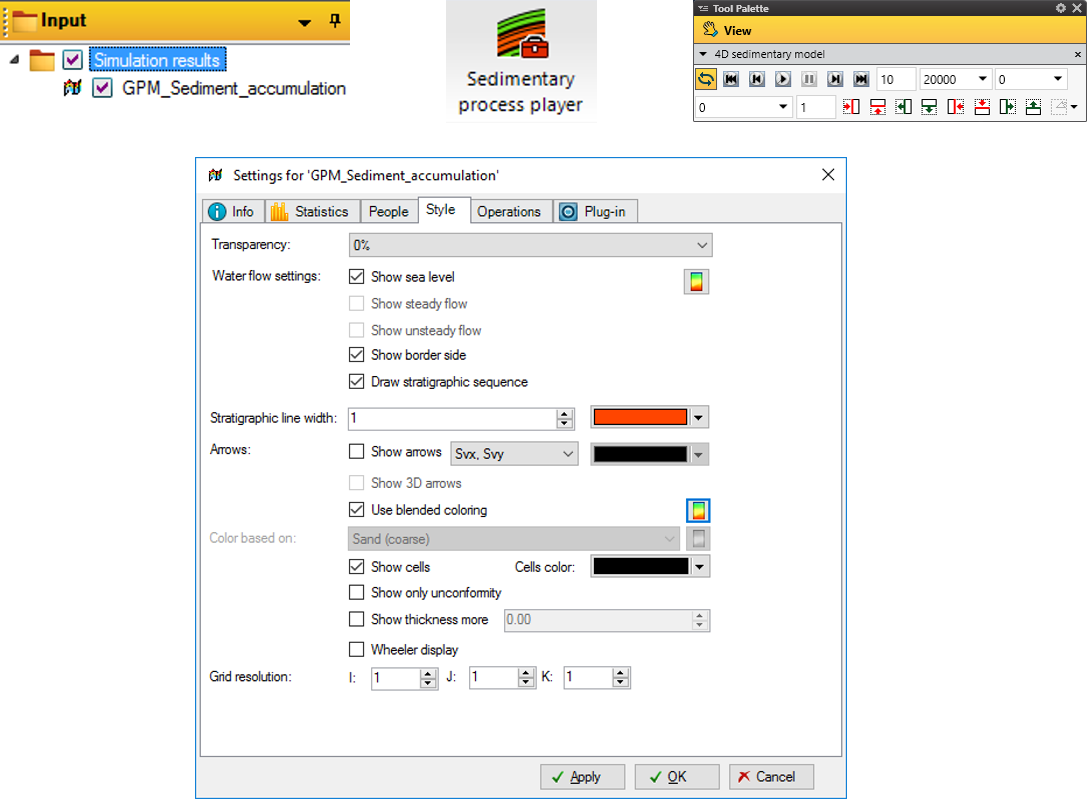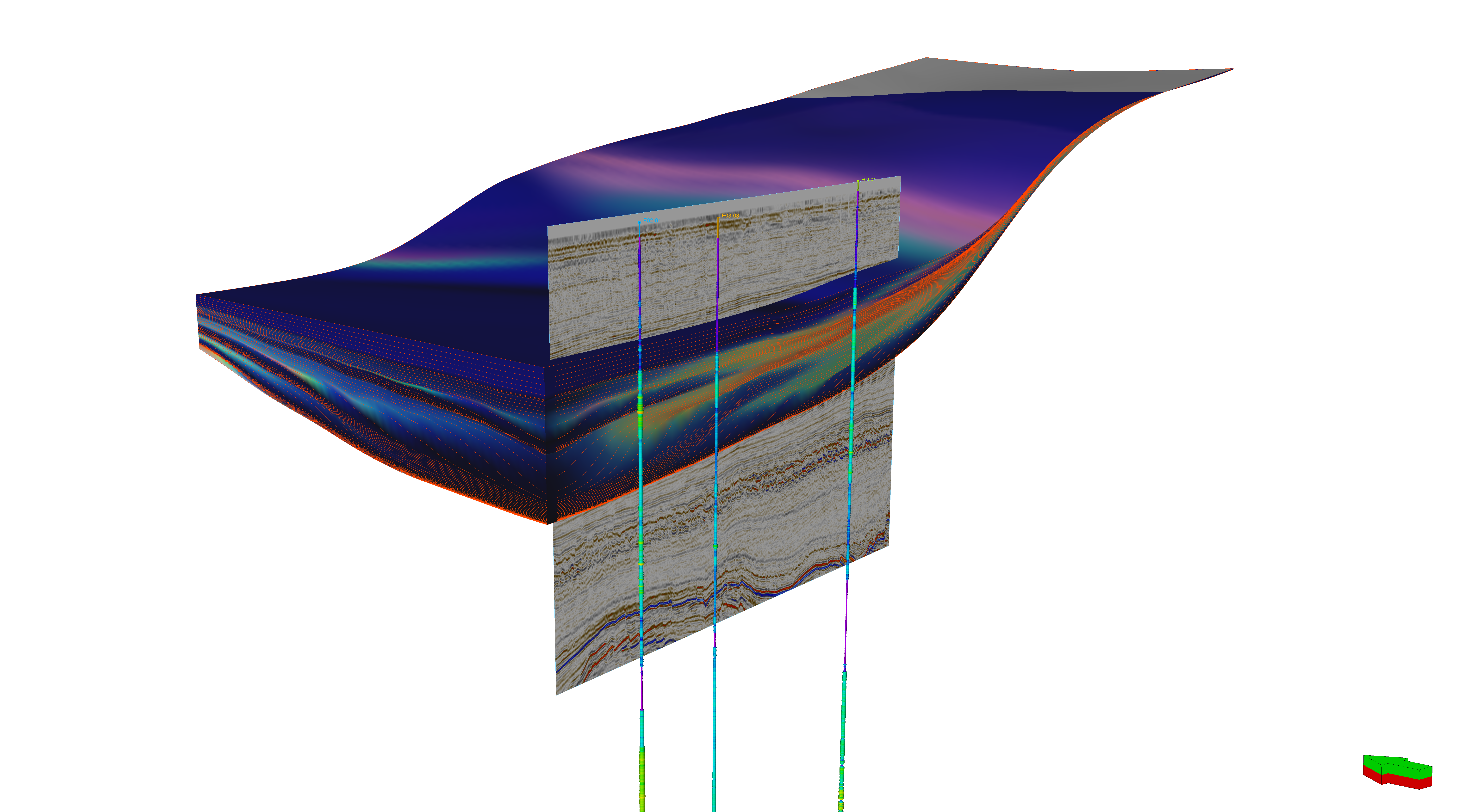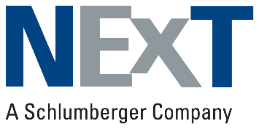 |
|||||||||||||||||
|
Issue #31 |
|||||||||||||||||
|
|
|||||||||||||||||
|
|
|||||||||||||||||
|
Forward modeling of stratigraphic and sedimentary processes GPM geological process modeling software is a simulator for forward modeling of stratigraphic and sedimentary processes. It provides a methodology to model siliciclastic and carbonate reservoirs based on the principle of mass and energy conservation. GPM software enables users to create stratigraphic models showing the expected sediment geometries and to predict the lithology distributions as well as gain insights into the composition and deposition of the sedimentary sequences. Specifically, GPM software models the erosion, transport, and deposition of clastic and carbonate sediments—either independently or concurrently—in different geological settings (for example, channels, rivers, turbidity flows, and shoreline systems) along with related geological processes such as carbonate growth, sediment compaction, and fluid expulsion. The process can be opened from the Stratigraphy domain tab – 4D sedimentary model: |
|||||||||||||||||
|
|
|||||||||||||||||
|
The image above shows the tools to explore different physically defensible scenarios of the depositional architecture and generate digital geological models by numerical simulation of the physical processes in combination with well-documented empirical rules. The resulting models represent a reasonably close approximation of reality if all boundary conditions are known. The output is stored inside the Simulation results folder in the input tree. The Sedimentary process player will allow you to display the model trough time. The display settings can be changed in the simulation settings – Style tab: |
|||||||||||||||||
|
|
|||||||||||||||||
|
The image below shows a forward modeling of clastic sediment distribution in a prograding delta system tract. The turbidite deposits were accurately predicted and described with boundary conditions calibrated with the seismic and well data. |
|||||||||||||||||
|
|
|||||||||||||||||
|
|
|||||||||||||||||
|
More information
For more information, visit our support portal: https://www.software.slb.com/ |
|||||||||||||||||
|
|||||||||||||||||
| Next technical online webinar: | |||||||||||||||||
|
|||||||||||||||||
|
Published: November 08, 2017 Newsletter Feedback: JBriceno4@slb.com
|
|||||||||||||||||
|
|||||||||||||||||






